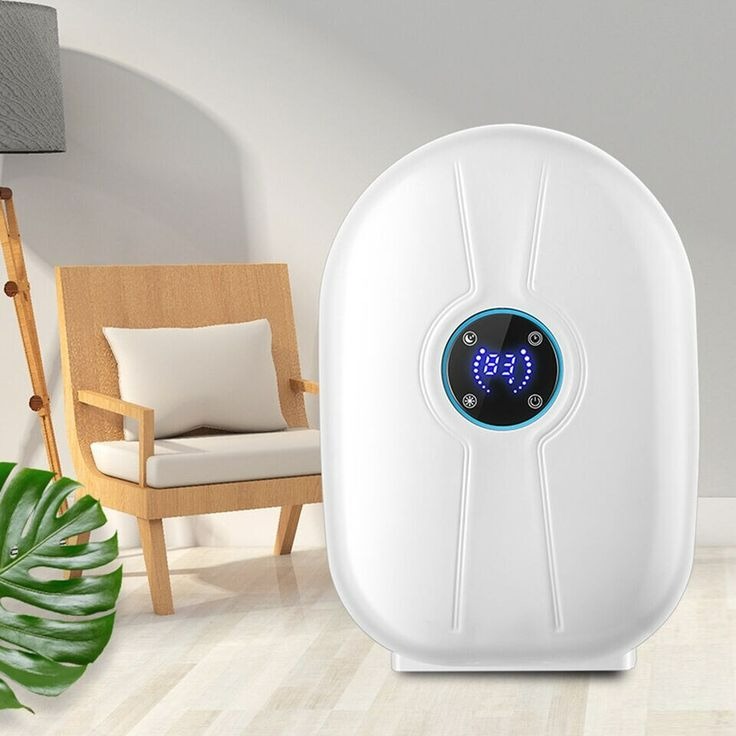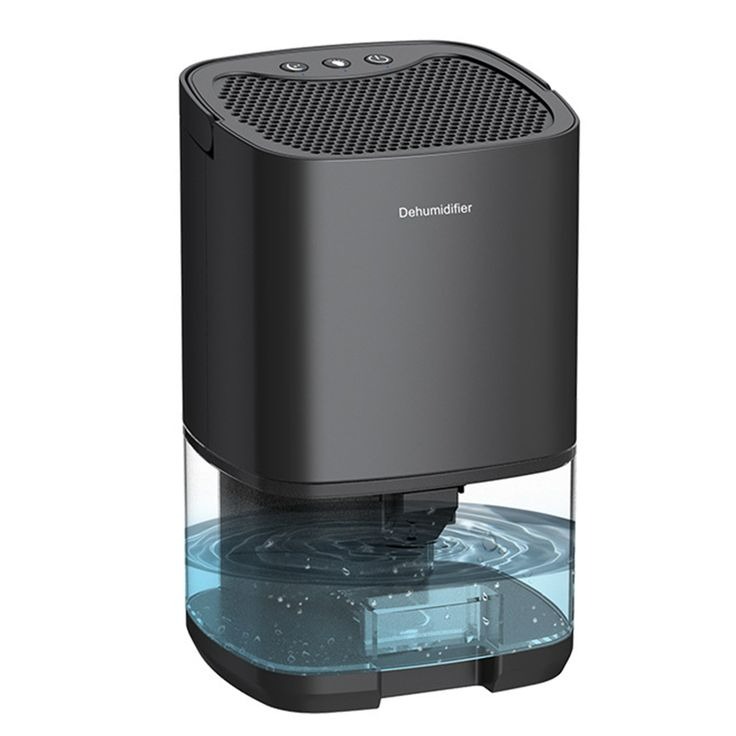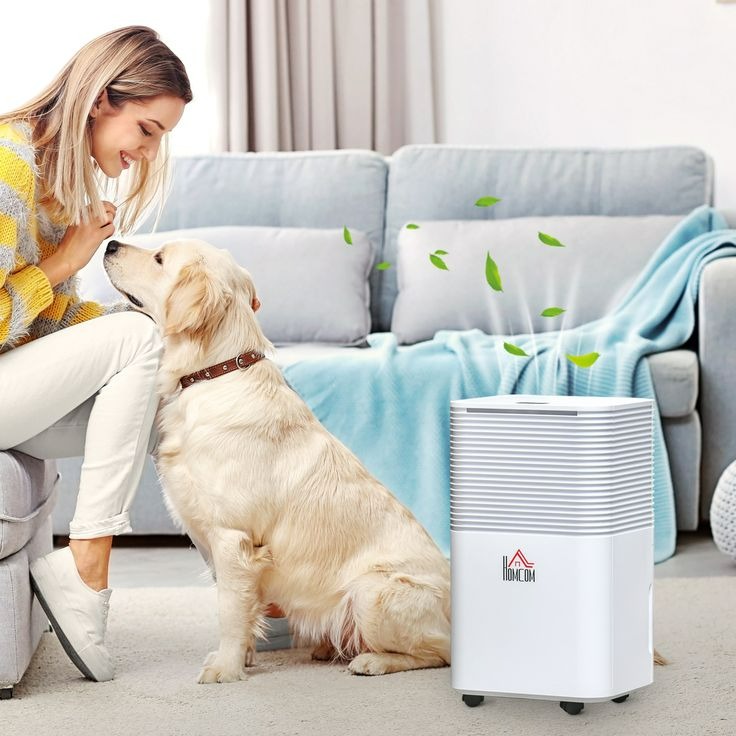Assessing Your Room Dehumidification Needs
Before investing in a room dehumidifier, assess your space’s specific needs. Here’s how to start:
- Evaluate the Room Size: The size of your space will dictate the capacity of the dehumidifier you need.
- Check Humidity Levels: Use a hygrometer to measure the room’s humidity. This will help you understand the extent of your dehumidification needs.
- Identify the Source of Moisture: Finding out where the excess moisture comes from can be vital. It may be due to indoor activities, or structural issues like leaks.
- Consider Room Use: Rooms with higher moisture production, like bathrooms or kitchens, may need more powerful dehumidifiers.
- Assess Air Flow: Proper ventilation can affect the performance of a room dehumidifier. Make sure your room has good air circulation.
Understanding your needs will help you choose the right room dehumidifier. It’s a balance between room size, moisture level, and how you use the space.

Types of Room Dehumidifiers
When looking for a room dehumidifier, you’ll encounter various types, each suited to specific needs. Below are the main types to consider:
- Refrigerant Dehumidifiers: These are common and work by cooling air, causing water to condense and collect in a reservoir.
- Desiccant Dehumidifiers: They use absorbent materials to remove moisture from the air, performing well at lower temperatures.
- Whole-House Dehumidifiers: These integrate with your home’s HVAC system, providing dehumidification throughout the entire house.
- Portable Dehumidifiers: Easy to move and ideal for targeting specific rooms or areas in your home.
When choosing a room dehumidifier, consider the type that best matches your room’s characteristics and your dehumidification needs. Refrigerant models are good for high humidity and warmer conditions. Desiccant units excel in cool, damp areas. Whole-house systems are perfect for consistent dehumidification across the home. Portable designs offer flexibility and localized control.
Selecting the right type of dehumidifier can significantly impact how effectively it reduces moisture and maintains a comfortable room environment.
Key Features to Look For in a Dehumidifier
When selecting a room dehumidifier, it’s not just about capacity and type. Several key features can enhance its performance and convenience. Here are the most important ones to consider:
- Adjustable Humidistat: This allows you to set your desired humidity level. The dehumidifier will cycle on and off to maintain it.
- Auto-Defrost Function: Without this, coils can freeze in cooler temperatures, causing the unit to stop working.
- Water Tank Size: The larger the tank, the less often you’ll need to empty it. Look for models with an auto-shutoff feature when full.
- Continuous Drainage Option: Some models offer a hose attachment for direct draining, saving you the work of emptying a tank.
- Quiet Operation: Especially important in living areas and bedrooms, you’ll want a dehumidifier that doesn’t make much noise.
- Washable Air Filter: Reduces dust and maintains air quality. Make sure the filter is easy to remove and clean.
- Portability: If you need to move the dehumidifier between rooms, look for one with wheels and handles.
- Digital Display: Offers a clear readout of humidity levels and settings for easy adjustments.
Remember to match these features with your needs. A larger water tank is great for high humidity rooms, while a quiet operation is key for bedrooms. Start with the essential functions and consider extra features as per your lifestyle and the room’s requirements.

Understanding Dehumidifier Capacity and Size
Dehumidifier capacity and size are crucial factors to consider. Capacity refers to how much moisture it can remove in a day, usually measured in pints. Understanding the capacity you need depends on your room’s square footage and humidity level.
- Measure Room Square Footage: Match the dehumidifier’s capacity to the size of your room. Larger rooms need higher-capacity dehumidifiers.
- Consider Moisture Level: For damp rooms or those with visible wet spots, choose a dehumidifier with a higher capacity.
- Check Capacity Ratings: Dehumidifiers have different pint capacities. Compare these to your assessed needs.
The actual size of the dehumidifier also matters. Larger units can hold more water, reducing the frequency of tank emptying. However, think about available space and the desire for portability. Larger dehumidifiers take up more room and might be harder to move.
- Evaluate the Unit’s Dimensions: Ensure the room dehumidifier fits well in the intended space.
- Portability Features: For ease of movement, look for units with wheels or handles.
Choosing the right capacity and size ensures efficient dehumidification without overspending on a too-large unit.
Energy Efficiency and Cost Considerations
When choosing a room dehumidifier, energy efficiency is key to keeping costs down. Here are some factors to consider:
- Energy Star Rating: Look for dehumidifiers with an Energy Star rating. They use less power and save money.
- Initial Purchase Price: Higher prices often relate to more features or efficiency. Balance cost with needed features.
- Operating Costs: Factor in the cost of electricity to run the dehumidifier. Efficient models cost less over time.
- Maintenance Costs: Think about replacement filters or parts. Low-maintenance models can reduce long-term expenses.
The right room dehumidifier should be cost-effective to both buy and run. A model with high energy efficiency will do its job without high electricity bills. Remember, investing in a highly efficient dehumidifier can lead to savings over its lifespan.

Maintenance and Upkeep of Room Dehumidifiers
Maintaining a room dehumidifier is easy but crucial for its performance. Here are some tips:
- Regular Cleaning: Clean the air filter monthly, or as the manufacturer instructs. Dust accumulation reduces efficiency.
- Check the Coils: Inspect the coils for frost or ice build-up. Defrost if needed to ensure smooth operation.
- Empty the Water Tank: Do this regularly to prevent overflow and mold growth. Always turn off the unit before removing the tank.
- Inspect for Leaks: Look around the unit for any signs of water leaks. Fix leaks to avoid water damage.
- Update Settings Seasonally: Adjust the humidistat with changing seasons to maintain comfort levels.
- Schedule Professional Maintenance: Have an expert check the dehumidifier annually. They can handle complex issues and keep it in top shape.
Keeping your room dehumidifier clean and well-maintained will extend its life and enhance room comfort. Always refer to your user manual for specific maintenance instructions for your dehumidifier model.
Popular Dehumidifier Brands and Models
Choosing a room dehumidifier also involves selecting a reliable brand and model. Below are popular brands and their standout models worth considering:
- Frigidaire: Known for their Energy Star-rated models, such as the Frigidaire FFAD7033R1 that boasts high efficiency and a large water tank.
- Honeywell: Offers models like the Honeywell TP50WK, which is praised for its user-friendly interface and quiet operation.
- DeLonghi: DeLonghi dehumidifiers, including the DeLonghi DD50PE, come with features such as an anti-frost function and pump system for continuous drainage.
- hOmeLabs: hOmeLabs HME020031N is popular for its sleek design and portability, making it a good fit for modern spaces.
- Danby: They provide durable dehumidifiers with auto-restart function, like the Danby DDR070BDWDB, which is an added convenience.
- Keystone: Keystone’s KSTAD50B is known for its simplicity and effectiveness, especially in larger rooms.
Each brand brings its unique features, so consider your room’s needs when choosing. Look at user reviews for the models you’re interested in to get real-world insights. Keep an eye on warranty periods and customer service experiences as they may influence your decision.
Where to Buy and What to Avoid
When buying a room dehumidifier, you have multiple options, including electronics stores, home improvement outlets, and online retailers. Here’s how to make a smart purchase:
- Compare Prices: Check various sellers for the best deal on the model you want.
- Read Reviews: Online reviews can provide valuable user feedback on performance and reliability.
- Avoid Used Models: Buying new ensures you get a warranty and the latest technology.
- Check Return Policies: Make sure you can return the dehumidifier if it doesn’t meet your expectations.
Avoid generic or unknown brands as they may not provide the same quality or customer support as established brands. Investing in a reputable room dehumidifier will ensure better performance and longer-lasting comfort in your home.
Where to Buy and What to Avoid
When shopping for a room dehumidifier, the goal is to find quality alongside a great deal. Here are key points to guide your purchase:
- Research Retailers: Both physical and online stores offer room dehumidifiers. Look for reputable electronics or home appliance stores with good customer service.
- Online Platforms: Online marketplaces like Amazon offer a broad range of options. Read product listings carefully for specifications and warranty information.
- Price Comparison: Use online tools to compare prices. This ensures you’re getting the best value for the same model.
- Customer Reviews: They can be a goldmine of information. Previous buyers often share insights on a dehumidifier’s performance and reliability.
- New vs. Used: A new model comes with a warranty and likely includes the latest features. Used dehumidifiers may lack warranty protection and could have wear issues.
- Return Policy: Choose sellers with clear return policies. This protects you if the dehumidifier doesn’t suit your space or has issues.
Avoid vendors with no physical address or customer service. Steer clear of deals that seem too good to be true, as they can be signs of counterfeit products. Reputable brands, transparent sellers, and thorough research will help you avoid common pitfalls in the buying process.